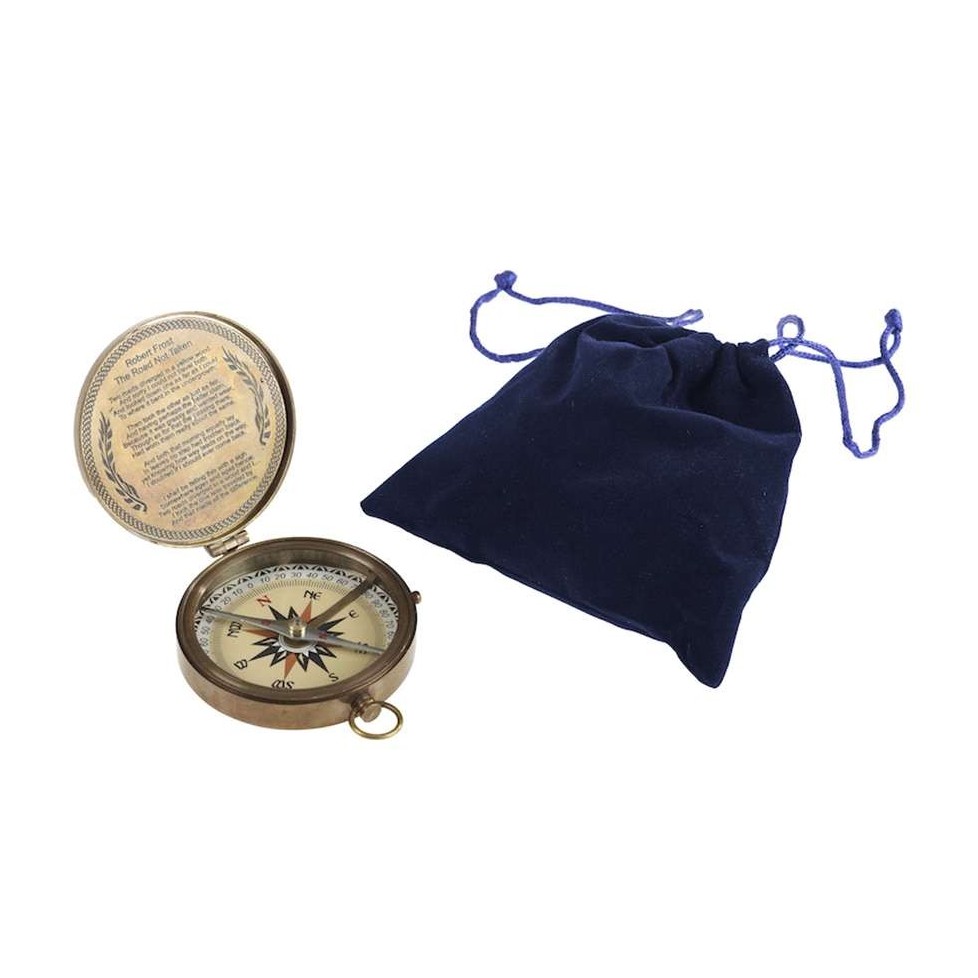

| Los pedidos realizados el día 25 de Julio, se procesarán el día 26 por fiesta local. |


Old brass compass with lovely compass rose. Comes with navy blue velvet bag.
The compass (from the Latin "passus" ("step")) opened up the world to exploration and discovery. The principle of the magnetic needle was already known to the Chinese in the 3rd century BC and was first used by feng shui priests to tell them where and how to build. It was adapted to maritime navigation by Chinese sailors around the year 1000. The first compasses comprised a magnetic needle floating in a bowl of water, with the needle suspended on a thread or threaded through a reed. The Arabs perfected this by mounting the needle on a pivot. The compass arrived in Europe between the 10th and 11th centuries, enabling sailers to cross the oceans and explorers to discover the continents. The first instrument to resemble the modern compass is attributed to Portuguese citizen Ferrande (1483). Old brass compass with lovely compass rose. Comes with navy blue velvet bag.
A perfect duo for lovers of meaningful little objects. These two aluminium compasses, one in black and the other in blue, feature a wind rose printed on the base — an eternal symbol of guidance and adventure. Ideal as a decorative detail, travel souvenir or thoughtful gift for those still searching for their own true north. The listed price is for the set...
High-precision moonphase clock from the prestigious IMEX Marine brand. Clear acrylic frame. Made in Spain. 1 year warranty. 15x15x5 cm.
The telescope appeared between the 16th and 17th centuries in the Netherlands. Its development is credited to Hans Lippershey and in its early stages was mainly used by sailors and naturalists. Reproduction leather-bound, four-tube telescope in antiqued brass. Comes with an acacia wood box decorated with brass inlays.
The telescope appeared between the 16th and 17th centuries in the Netherlands. Its development is credited to Hans Lippershey and in its early stages was mainly used by sailors and naturalists.Reproduction telescope in antiqued brass. Comes with an acacia wood box with brass inlays and plaque.
High precision tide indicator. An indispensable instrument to know the level of the tides throughout the year and to be able to enjoy the sea or the beach at high or low tide hours. Once you receive the instrument, adjust it to the tide times of the place where you are during the full moon. The tide indicator only needs to be adjusted once at the place...
Lovely ship's bell in brass with hemp lanyard. In the past this essential instrument was used to organise life on board by regulating the duty watches. It was also used as an alarm bell in thick fog and to mark celebrations.